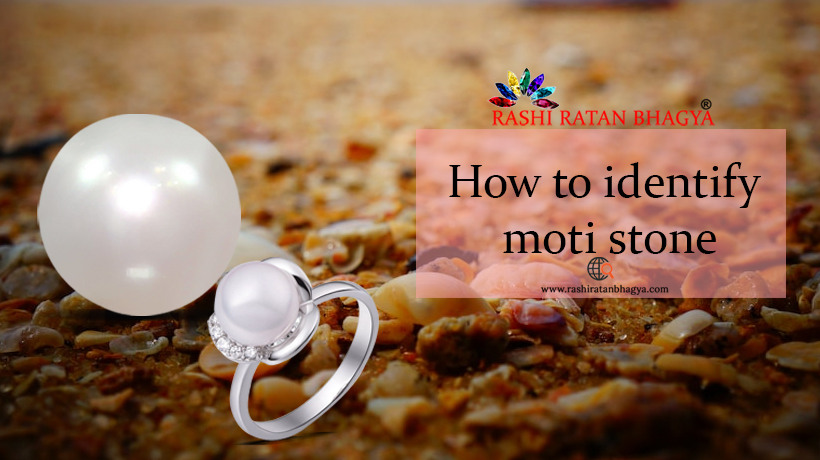How to identify moti stone – real or fake

Moti is quite a popular gemstone. Its creation process differs from that of another gemstone. While other gemstones are formed from rocky surfaces and are extracted through mines, the moti stone is formed in the nacre of a mollusk shell. It is cultivated in water bodies that have freshwater or salt water. Since the demand is more than the supply, moti gemstone costs high and so one should know how to identify real moti stone.
Here is the identification process usually followed to know if moti stone is real or fake.
a. Tooth test: One can rub the moti against the front teeth. It should be rubbed on the surface of the front teeth while doing the test; the edge may cause scratch in real moti stone. The authentic moti stone will feel a bit rough whereas the fake moti stone will feel quite smooth. It is because the fake moti is made of plastic that feels non-gritty.
b. Shine: The shine of the real moti is quite lustrous and it is of dull luster in the fake moti stone.
c. Loupe test: In this identification procedure, the moti stone is placed under a loupe for surface test. The loupe can capture the details of the moti stone surface. The authentic moti stone has fine grainy appearance as against the fake moti that appears lumpy.
d. Bounce test: The moti is made to ricochet on hand lightly. The real moti feels heavier and does not bounce much unlike the fake moti that is quite light.
e. Looks: All real moti stones are perfectly round and smooth. But, the fake moti stones can pick any shape or size.
The above are the easy ways of identifying the real moti from the fake one. You can also reach certified real moti stone online sellers to avoid the hassles. The certified sellers get all pearls tested in approved labs before putting them for purchasing.
Also read:- How to select a reliable wholesale gemstone suppliers?
Differences between the fake pearls and real pearls
It is important to learn how to tell the real pearl apart from the fake one. The process is simple, but effective in separating the real pearls from the fake counterparts. The key differences between the real and fake pearls are:
a. Color and tints: The real pearls differ from one another in color throughout the surface. Since each pearl comes from a different mollusk, the look is not the same. But in case of fake pearls, the color is same and does not differ from each other in a lot.
b. Uniform look: Since fake pearls are manmade or machine produced, they never differ from each other. The surface is quite clean and free from blemishes. Real pearls will show miniscule difference in looks when observed under a loupe.
c. Shine: The fake pearl’s surface is uniformly curved or made perfectly spherical. Thus, these pearls radiate the light uniformly from all surface. The real pearls shine from within. The luster is quite deep in the real pearls unlike the fake pearls.
d. Heaviness: Pearls can be weighed on hands to understand if the lot is made of real or fake ones. The real pearls feel heavy because of grittiness and the fact that these are not made from a predesigned mold.
By noticing these differences, the buyers can justify the real moti stone price.
You can also take a look at the price tag to understand if the real moti is what you are being offered by the seller. The real moti stone price varies from $15 to $400 approximately. Since these are made through a natural phenomenon, the cultivation is not too fast. The conditions are created for producing pearls from mollusks. Mostly, the cultivated pearls come from Japan these days and the buyer is given complete information about the authenticity before striking a deal.
To conclude
Real pearls are not perfect in shape, color and feel. Since these are made from mollusks, the nature rubs on them and delivers some imperfections. You can check these imperfections by rubbing against teeth, or by observing them under the magnifying glass. With the help of easy tests and the mark of authenticity, the buyers can get hold of real pearls and pay the price these stones deserve.
Also Read:- Astrological Benefits of Pukhraj Stone